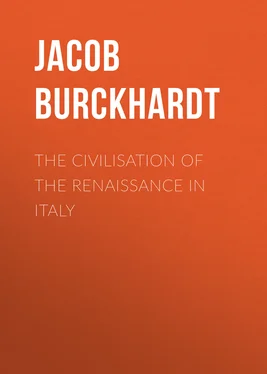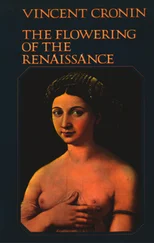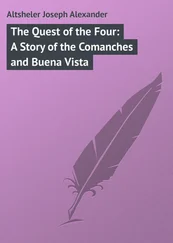Jacob Burckhardt - The Civilisation of the Renaissance in Italy
Здесь есть возможность читать онлайн «Jacob Burckhardt - The Civilisation of the Renaissance in Italy» — ознакомительный отрывок электронной книги совершенно бесплатно, а после прочтения отрывка купить полную версию. В некоторых случаях можно слушать аудио, скачать через торрент в формате fb2 и присутствует краткое содержание. Жанр: foreign_prose, История, foreign_edu, foreign_antique, на английском языке. Описание произведения, (предисловие) а так же отзывы посетителей доступны на портале библиотеки ЛибКат.
- Название:The Civilisation of the Renaissance in Italy
- Автор:
- Жанр:
- Год:неизвестен
- ISBN:нет данных
- Рейтинг книги:5 / 5. Голосов: 1
-
Избранное:Добавить в избранное
- Отзывы:
-
Ваша оценка:
- 100
- 1
- 2
- 3
- 4
- 5
The Civilisation of the Renaissance in Italy: краткое содержание, описание и аннотация
Предлагаем к чтению аннотацию, описание, краткое содержание или предисловие (зависит от того, что написал сам автор книги «The Civilisation of the Renaissance in Italy»). Если вы не нашли необходимую информацию о книге — напишите в комментариях, мы постараемся отыскать её.
The Civilisation of the Renaissance in Italy — читать онлайн ознакомительный отрывок
Ниже представлен текст книги, разбитый по страницам. Система сохранения места последней прочитанной страницы, позволяет с удобством читать онлайн бесплатно книгу «The Civilisation of the Renaissance in Italy», без необходимости каждый раз заново искать на чём Вы остановились. Поставьте закладку, и сможете в любой момент перейти на страницу, на которой закончили чтение.
Интервал:
Закладка:
Meanwhile the material knowledge of old Rome was increased by excavations. Under Alexander VI. the so-called ‘Grotesques,’ that is, the mural decorations of the ancients, were discovered, and the Apollo of the Belvedere was found at Porto d’Anzo. Under Julius II. followed the memorable discoveries of the Laöcoon, of the Venus of the Vatican, of the Torso, of the Cleopatra. 424The palaces of the nobles and the cardinals began to be filled with ancient statues and fragments. Raphael undertook for Leo X. that ideal restoration of the whole ancient city which his celebrated letter (1518 or 1519) speaks of. 425After a bitter complaint over the devastations which had not even then ceased, and which had been particularly frequent under Julius II., he beseeches the Pope to protect the few relics which were left to testify to the power and greatness of that divine soul of antiquity whose memory was inspiration to all who were capable of higher things. He then goes on with penetrating judgment to lay the foundations of a comparative history of art, and concludes by giving the definition of an architectural survey which has been accepted since his time; he requires the ground plan, section, and elevation separately of every building that remained. How archæology devoted itself after his day to the study of the venerated city and grew into a special science, and how the Vitruvian Academy at all events proposed to itself great aims, 426cannot here be related. Let us rather pause at the days of Leo X., under whom the enjoyment of antiquity combined with all other pleasures to give to Roman life a unique stamp and consecration. 427The Vatican resounded with song and music, and their echoes were heard through the city as a call to joy and gladness, though Leo did not succeed thereby in banishing care and pain from his own life, and his deliberate calculation to prolong his days by cheerfulness was frustrated by an early death. 428The Rome of Leo, as described by Paolo Giovio, forms a picture too splendid to turn away from, unmistakable as are also its darker aspects—the slavery of those who were struggling to rise; the secret misery of the prelates, who, notwithstanding heavy debts, were forced to live in a style befitting their rank; the system of literary patronage, which drove men to be parasites or adventurers; and, lastly, the scandalous maladministration of the finances of the state. 429Yet the same Ariosto who knew and ridiculed all this so well, gives in the sixth satire a longing picture of his expected intercourse with the accomplished poets who would conduct him through the city of ruins, of the learned counsel which he would there find for his own literary efforts, and of the treasures of the Vatican library. These, he says, and not the long-abandoned hope of Medicean protection, were the real baits which attracted him, when he was asked to go as Ferrarese ambassador to Rome.
But the ruins within and outside Rome awakened not only archæological zeal and patriotic enthusiasm, but an elegiac or sentimental melancholy. In Petrarch and Boccaccio we find touches of this feeling (pp. 177, 181). Poggio ( p. 181) often visited the temple of Venus and Rome, in the belief that it was that of Castor and Pollux, where the senate used so often to meet, and would lose himself in memories of the great orators Crassus, Hortensius, Cicero. The language of Pius II., especially in describing Tivoli, has a thoroughly sentimental ring, 430and soon afterwards (1467) appeared the first pictures of ruins, with, a commentary by Polifilo. 431Ruins of mighty arches and colonnades, half hid in plane-trees, laurels, cypresses, and brushwood, figure in his pages. In the sacred legends it became the custom, we can hardly say how, to lay the scene of the birth of Christ in the ruins of a magnificent palace. 432That artificial ruins became afterwards a necessity of landscape gardening, is only a practical consequence of this feeling.
CHAPTER III.
THE OLD AUTHORS
BUT the literary bequests of antiquity, Greek as well as Latin, were of far more importance than the architectural, and indeed than all the artistic remains which it had left. They were held in the most absolute sense to be the springs of all knowledge. The literary conditions of that age of great discoveries have been often set forth; no more can be here attempted than to point out a few less-known features of the picture. 433
Great as was the influence of the old writers on the Italian mind in the fourteenth century and before, yet that influence was due rather to the wide diffusion of what had long been known, than to the discovery of much that was new. The most popular Latin poets, historians, orators, and letter-writers, together with a number of Latin translations of single works of Aristotle, Plutarch, and a few other Greek authors, constituted the treasure from which a few favoured individuals in the time of Petrarch and Boccaccio drew their inspiration. The former, as is well known, owned and kept with religious care a Greek Homer, which he was unable to read. A complete Latin translation of the ‘Iliad’ and ‘Odyssey,’ though a very bad one, was made at Petrarch’s suggestion and with Boccaccio’s help by a Calabrian Greek, Leonzio Pilato. 434But with the fifteenth century began the long list of new discoveries, the systematic creation of libraries by means of copies, and the rapid multiplication of translations from the Greek. 435
Had it not been for the enthusiasm of a few collectors of that age, who shrank from no effort or privation in their researches, we should certainly possess only a small part of the literature, especially that of the Greeks, which is now in our hands. Pope Nicholas V., when only a simple monk, ran deeply into debt through buying manuscripts or having them copied. Even then he made no secret of his passion for the two great interests of the Renaissance, books and buildings. 436As Pope he kept his word. Copyists wrote and spies searched for him through half the world. Perotto received 500 ducats for the Latin translation of Polybius; Guarino, 1,000 gold florins for that of Strabo, and he would have been paid 500 more but for the death of the Pope. Filelfo was to have received 10,000 gold florins for a metrical translation of Homer, and was only prevented by the Pope’s death from coming from Milan to Rome. Nicholas left a collection of 5,000, or, according to another way of calculating, of 9,000 volumes, 437for the use of the members of the Curia, which became the foundation of the library of the Vatican. It was to be preserved in the palace itself, as its noblest ornament, like the library of Ptolemy Philadelphus at Alexandria. When the plague (1450) drove him and his court to Fabriano, whence then, as now, the best paper was procured, he took his translators and compilers with him, that he might run no risk of losing them.
The Florentine Niccolò Niccoli, 438a member of that accomplished circle of friends which surrounded the elder Cosimo de Medici, spent his whole fortune in buying books. At last, when his money was all gone, the Medici put their purse at his disposal for any sum which his purpose might require. We owe to him the completion of Ammianus Marcellinus, of the ‘De Oratore’ of Cicero, the text of Lucretius which still has most authority, and other works; he persuaded Cosimo to buy the best manuscript of Pliny from a monastery at Lübeck. With noble confidence he lent his books to those who asked for them, allowed all comers to study them in his own house, and was ready to converse with the students on what they had read. His collection of 800 volumes, valued at 6,000 gold florins, passed after his death, through Cosimo’s intervention, to the monastery of San Marco, on the condition that it should be accessible to the public, and is now one of the jewels of the Laurentian library.
Of the two great book-finders, Guarino and Poggio, the latter, 439on the occasion of the Council of Constanz and acting partly as the agent of Niccoli, searched industriously among the abbeys of South Germany. He there discovered six orations of Cicero, and the first complete Quintilian, that of St. Gall, now at Zürich; in thirty-two days he is said to have copied the whole of it in a beautiful handwriting. He was able to make important additions to Silius Italicus, Manilius, Lucretius, Valerius, Flaccus, Asconius, Pedianus, Columella, Celsus, Aulus, Gellius, Statius, and others; and with the help of Lionardo Aretino he unearthed the last twelve comedies of Plautus, as well as the Verrine orations, the ‘Brutus’ and the ‘De Oratore’ of Cicero.
Читать дальшеИнтервал:
Закладка:
Похожие книги на «The Civilisation of the Renaissance in Italy»
Представляем Вашему вниманию похожие книги на «The Civilisation of the Renaissance in Italy» списком для выбора. Мы отобрали схожую по названию и смыслу литературу в надежде предоставить читателям больше вариантов отыскать новые, интересные, ещё непрочитанные произведения.
Обсуждение, отзывы о книге «The Civilisation of the Renaissance in Italy» и просто собственные мнения читателей. Оставьте ваши комментарии, напишите, что Вы думаете о произведении, его смысле или главных героях. Укажите что конкретно понравилось, а что нет, и почему Вы так считаете.












